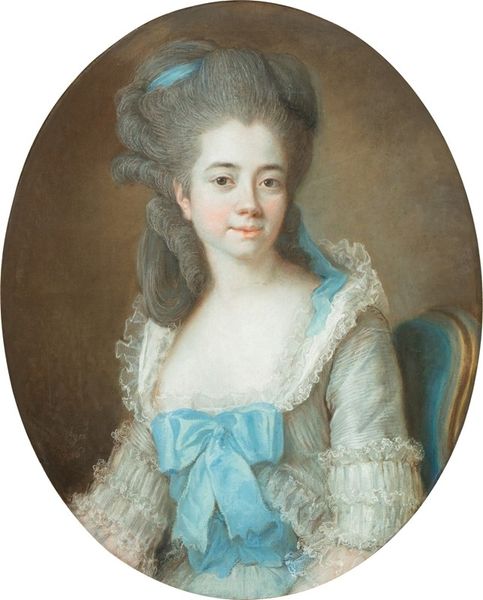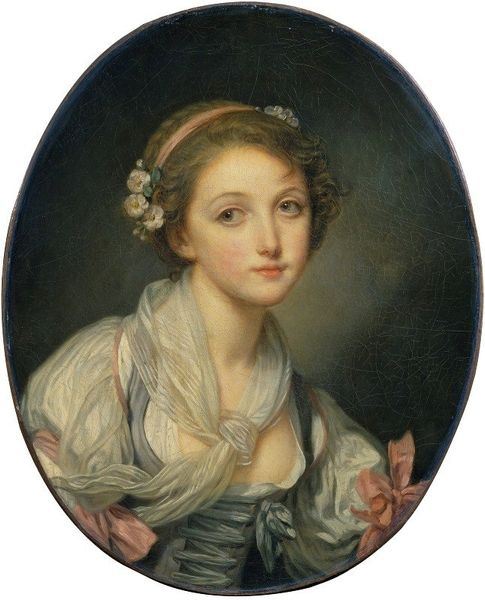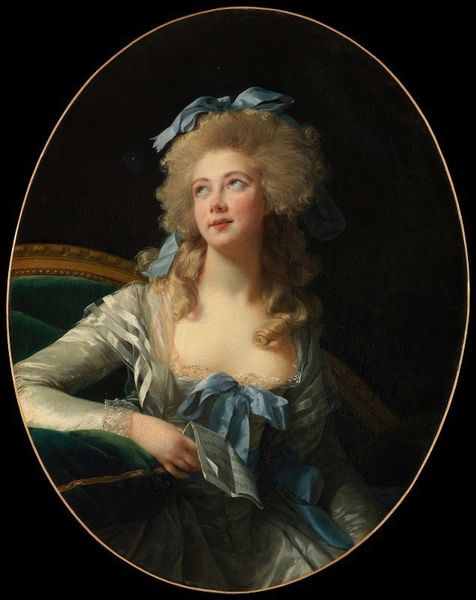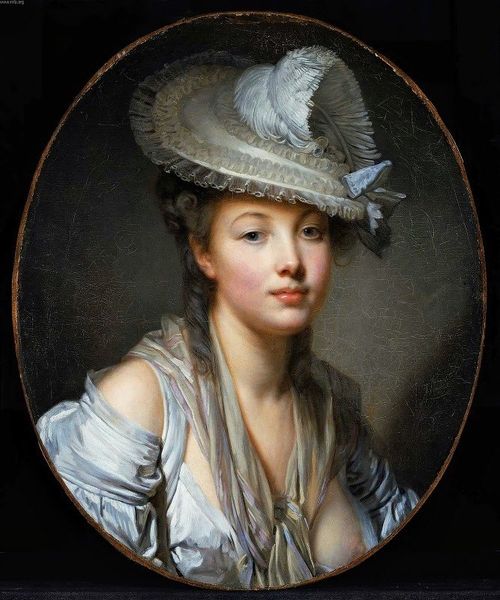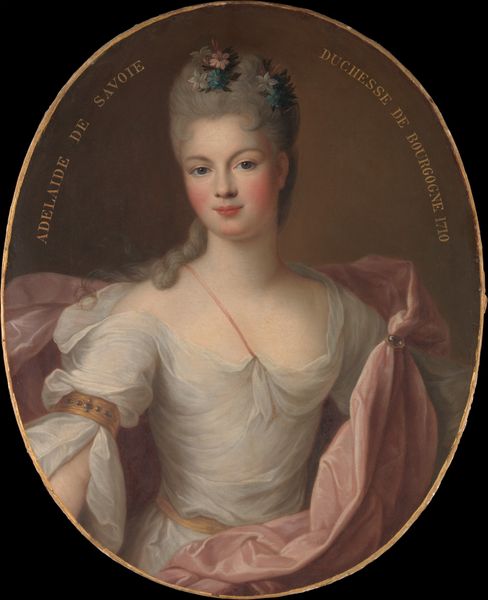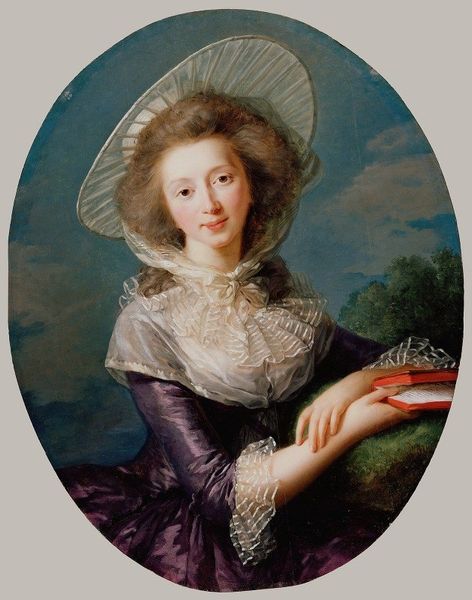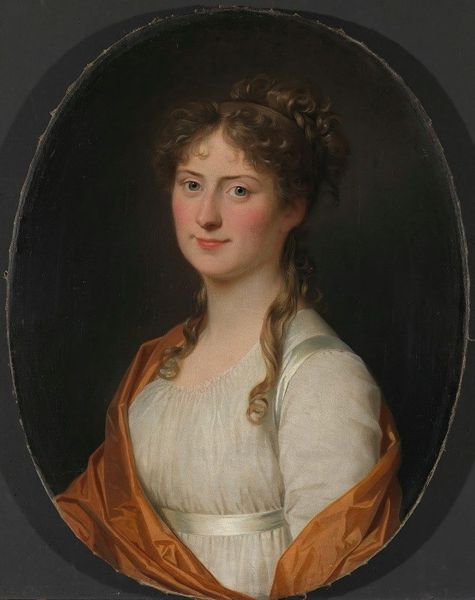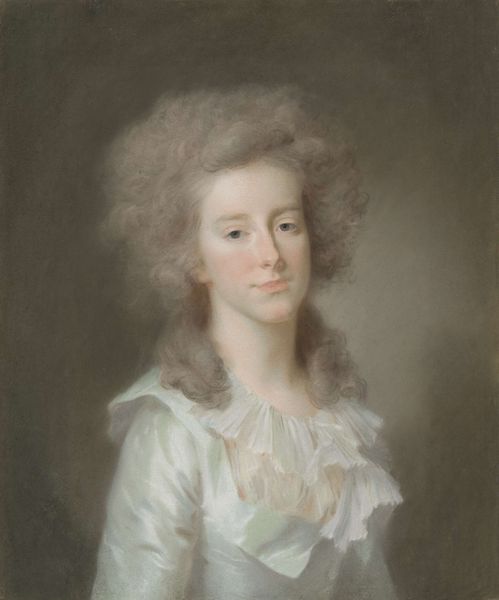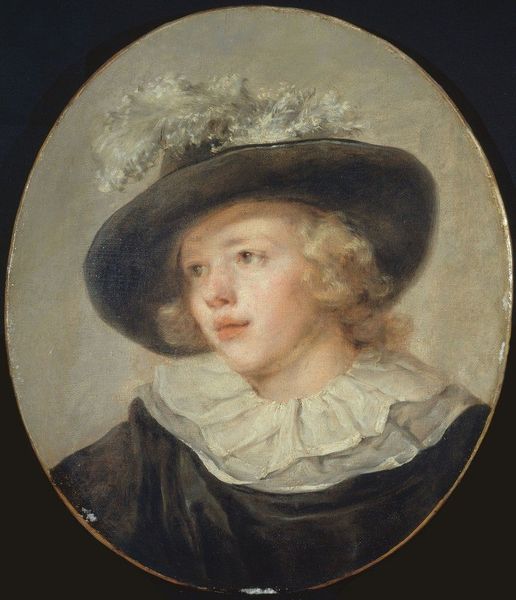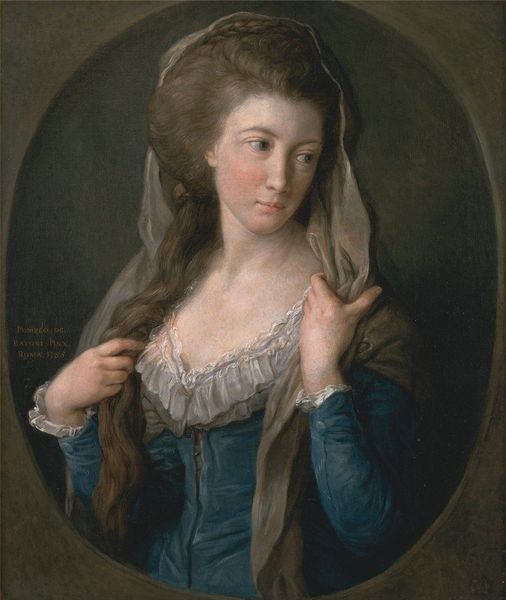
Portrait présumé de Charlotte-Françoise Bergeret de Norinval 1780 - 1783
0:00
0:00
Copyright: Public Domain: Artvee
Elisabeth Louise Vigée Le Brun painted this portrait of Charlotte-Françoise Bergeret de Norinval, probably in France during the late 18th century. Le Brun was one of the few women admitted to the French Royal Academy of Painting and Sculpture, so it is interesting to consider what a portrait by a woman says about the social expectations around women in the period. Le Brun was best known for her flattering portraits of Marie Antoinette, and this one shows a woman of similar social standing. Everything about the sitter speaks to the values of the French aristocracy. Her dress, with its ruffled collar, the elaborate hairstyle, and the delicate veil, indicate wealth and status. The soft colors and delicate brushwork suggest her refined sensibilities. To interpret this work fully, it helps to draw on resources from social history, like letters, diaries, and fashion plates, which help to show us how portraits participated in the circulation of social values and political power. By situating the artwork in its historical and institutional context, we can better understand its meanings and significance.
Comments
No comments
Be the first to comment and join the conversation on the ultimate creative platform.
